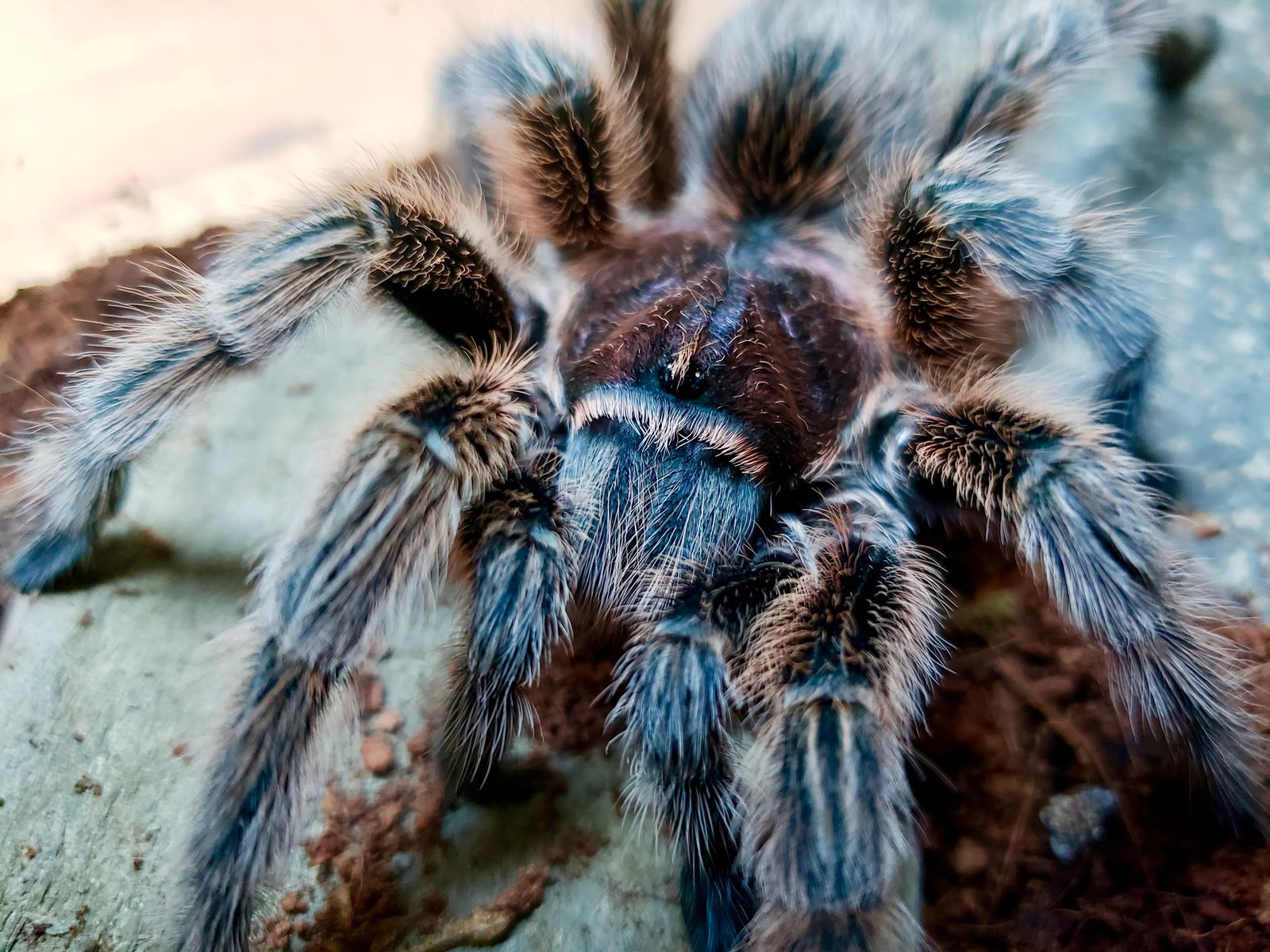
Tarantula
GRAMMOSTOLA ROSEA
Tarantulas get their name from a dance performed in Italy called the "Tarantella". This dance was performed after a person was bitten as it was believed to cause a hysterical condition called tarantism. However, a tarantula bite is only about as bad as a bee sting. Unless a person is allergic to the venom, very little harm is caused. There are also no recorded fatalities due to a tarantula bite. A Tarantula's diet consists of insects, frogs, other spiders, and even small mammals such as mice. They rely on their venom and large size to subdue and kill their prey. Once they've eaten enough they will form food balls with the leftovers made of silk. Tarantulas are usually skittish, running away from danger rather than acting defensively, but they may also raise their front legs and present their fangs in preparation to defend themselves. When threatened, a tarantula will flick urticating (stinging) hairs off its abdomen at the predator causing the predator to have an itchy feeling and while distracted, the tarantula will make an escape. Other hairs on the tarantula's body are their most important source of sensory perception. Some hairs contain temperature or smell receptors, and others can detect airborne vibrations.
Click HERE for a Tarantula Activity Sheet!
Our Current Residents
Chilean Rose Haired Tarantula - Taboo, Female Hatched 2014
Taboo came to ZooMontana in 2015 as a pet surrender. Taboo is a regular in programs both on and offsite. She is one of the most relaxed ambassador animals. As the name suggests, these Tarantulas are found in Chile, Argentina and Bolivia. They can live 20 years.
Red Island Bird Eating Tarantula - Bingo
Hatched 2021
These Tarantulas are found in the Caribbean and are known for their fast growth. They eat a variety of foods including insects, birds and even small mammals.
Greenbottle Blue Tarantula - Bluey
Hatched 2021
These attractive Tarantulas are found in Northern Venezuela. They build webbed burrows, often resembling a funnel.
Taxonomy
- Kingdom: Animalia
- Phylum: Arthropoda
- Class: Arachnida
- Order: Araneae
- Family: Theraphosidae
Animal Facts
- Carnivore/Insectivore: Eats meat such as insects, frogs, spiders, and small mammals.
- Population: Stable
- Habitat: Desert, Dry Grassland, Rainforests
- Mostly Nocturnal: Active during the night












































